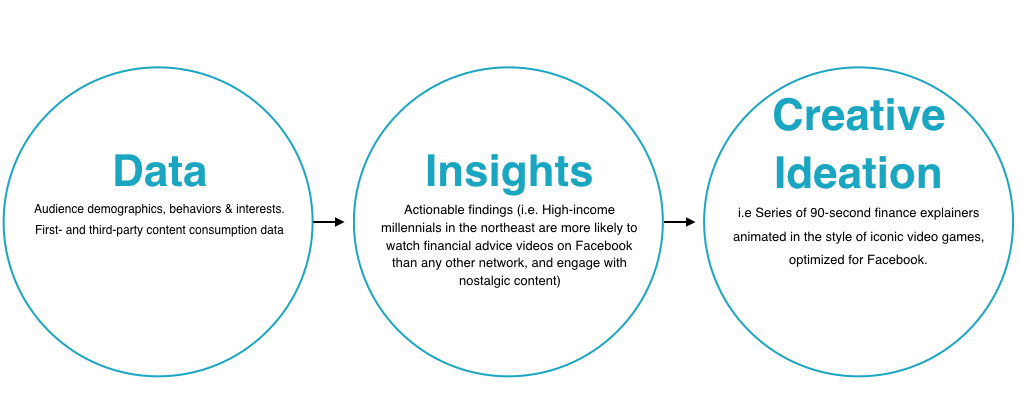Ask a Content Strategist
Ask a Content Strategist: How Do You Create Data-Driven Content?
Welcome to Ask a Content Strategist, the column where I answer the questions you’re terrified your boss will ask you in the next marketing all-hands meeting.
It’s July, which means two things: seething with jealousy over the out-of-office messages of your European colleagues (“On Holiday until September!”), and a chance to take a breath and reflect on our biggest marketing challenges. With that in mind—and as a part of our Accountable Content Series—let’s dive into the hottest topic of marketing in the past 10 years (and probably the next 10 as well): data.
I’ve been hearing the term “data-driven content” in pretty much every corner of the content marketing universe lately. But what the hell does that really mean? How do you create it?
—Ashley, New York
I love to lampoon marketing buzzwords, but truth be told, I use them every day. (“Let’s optimize this article with real-time personalization that’ll yield down-funnel business results, guys!”) Without a doubt, “data-driven content” is one I use without shame.
That’s because a good content program should always be driven by strong, data-backed insights. It’s at the core of our approach at Contently; we’ve built a technology suite that reveals everything from what writers you should use, to how to optimize the tone of your content, to which pieces are secretly driving more—or less—engagement than you think.
But as marketers, we tend to view data as a magic oracle that’ll solve all our problems. The reality, though, is that data in a vacuum is nothing but a bunch of numbers in a spreadsheet.
I often think of something that Alicia Hatch (the CMO of Deloitte) said when I joined her on stage at the Collision Conference this year:
The thing I’ve noticed the most when I talk to CMOs is that they have all the technology to make this happen. They’ve got a shiny stack as tall as the sky. They’ve got all this data at their fingertips. And yet, the organization doesn’t know how to use it effectively.
In other words, data itself is just one part of a larger machine. It may be the fuel, but you need a working engine that turns data into something that actually drives results.
In the simplest form, raw data that you have about your audience—think audience demographics, persona research, and first-and-third party data about what content they like to consume or tends to drive sales—should translate to insights. For a finance brand, this might result in something like: “High-income millennials in the northeast are more likely to watch financial advice videos on Facebook than any other network, and engage disproportionally with content that triggers nostalgia.”
Data is just one part of a larger machine. It may be the fuel, but you need a working engine that turns data into something that actually drives results.
Those insights should inform creative ideas, like doing a series of 90-second explainers animated in the style of iconic video games from the 1990s optimized for Facebook native video.

This process is crucial. If you just deliver a giant spreadsheet of data to creative people, they’re going to struggle. But if you give them easy-to-understand insights—in other words, value context to help them make decisions—you’re much more likely to facilitate breakthrough content that delivers business results.
It’s not the easiest task. At Cannes Lions last month, I attended a panel at Index Exchange’s suite where Vox Media CMO Lindsay Nelson talked about how good data analysts are some of the hardest people to find. But they’re worth the investment. And if you can find a content strategist who can both translate raw data into great insights and then also come up with killer content ideas? Never let them go.
What tactics can you use to find the questions that your target group is actually asking about a specific (read, technical) topic?
—Griselda, Stockholm
I love this—there may be no better fodder for story ideas than the questions your target audience is asking. These are my five favorite sources for tracking them down:
1. Q&A sites and other online communities where your target audience is active
I spend a fair amount of time checking content marketing and content strategy questions on Quora, inbound.org, and content marketing groups on LinkedIn. Social listening tools can also be a boon here.
Sites like Inbound and LinkedIn are great because their professional information is front and center, so you can even track questions by persona. These kind of sites also tend to have less filtered discussions since it’s a group of peers casually discussing their issues, rather than a formal focus group.
2. Interviews with customers
You know they’re in your target audience because they bought something from you! Take time to formally interview them about their questions and challenges, particularly as it relates to the solution you provide.
3. Your sales and accounts teams
They field questions from clients and prospects all day. Ask them to take 15 minutes to fill out a Google form and record the questions they hear the most, and hold meetings to get their perspective. (We even created a whole system inside Contently to collect this information.) You won’t regret it.
4. Audience surveys
We survey our 100,000-plus subscribers regularly, and often ask them what questions they’d like to see tackled in our content. You’d be surprised at how eager your audience is to provide feedback.
5. Start a mailbag column in which you ask readers to ask you questions on a very specific topic like, say, content strategy
Not going to lie—it’s working pretty well.
Joe Lazauskas is Contently’s director of content strategy and editor-in-chief. Ask him your most pressing content strategy questions here, or email him at lazer@contently.com.
Image by Creative CommonsGet better at your job right now.
Read our monthly newsletter to master content marketing. It’s made for marketers, creators, and everyone in between.




